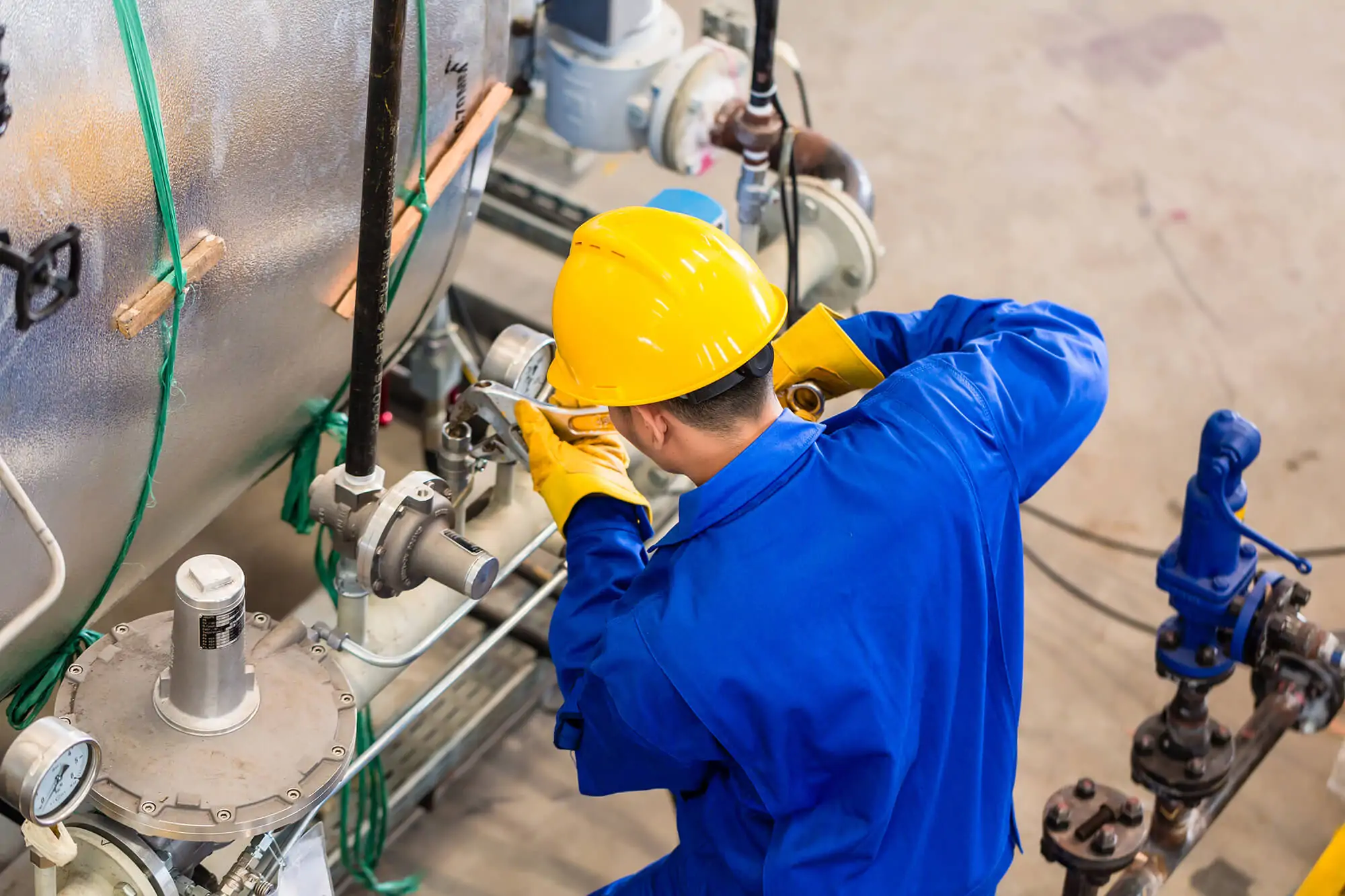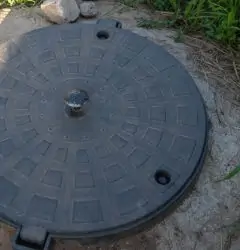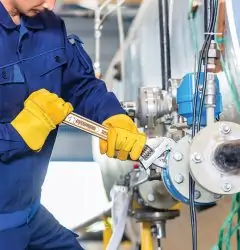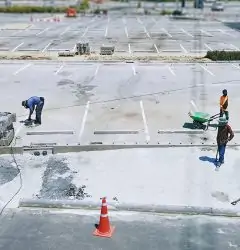07 Jul

Running a production industry requires a few heavy pieces of machinery to produce goods. For good quality products to be produced timely, these machines have to be taken care of, otherwise, they will end up breaking down. To prevent this from happening, these machines must undergo proper maintenance.
What Is Machine Maintenance?
The constant running of heavy mechanical assets in a production plant can lead to the machines’ deterioration. This, in turn, would affect the production schedules, which no organization can afford to have. Due to this reason, machine maintenance is a very critical and essential service for any production plant.
The maintenance of the automative machinery includes routine checks, scheduled service, scheduled and emergency repairs, and replacement or service of worn out or damaged parts of the machinery.
To sum it all up, the main function of machine maintenance is to prevent any machine failure from happening, to prevent any delays in the production operations of an organization. Even if it does happen, the machinery can be repaired right away, without any major delays in the production schedules.
Types Of Machine Maintenance
There are different types of machine maintenance strategies that can be adapted by you for the maintenance of your factory machinery. The different types of machine maintenance strategies have been discussed below.
1. Preventive Maintenance
As the name suggests, the preventative maintenance is carried out regularly to help reduce the mechanical machinery from failing. The preventative maintenance is sub-divided into two:
Time-Based:
This maintenance is done after every fixed time interval, such as on the first of every month or after every week. This mostly depends on the running of heavy machinery.
Usage-Based:
This maintenance depends on the operation of the equipment. This means that machinery maintenance is scheduled after every 1,000 miles or after the completion of ten production cycles.
2. Break Down Maintenance
The breakdown maintenance is carried out when there has been any sort of failure associated with the machine. This hinders the functioning of the machine, which in turn affects the production cycle. In the breakdown maintenance, the machinery is repaired or replaced with the same components, which were faulty or damaged. All of the maintenance work is done as quickly as possible, trying to disrupt the production cycle as minimally as possible.
3. Corrective Maintenance
The corrective maintenance takes place before the machine reaches a point of a full failure. This includes any small, non-invasive tasks that are noticed during a routine inspection. To explain this further, think about going to the mechanic to get your car’s oil changed, and then noticing a little flat tire, which you get pumped. The pumping of the tire with air, before it gets punctured, is an example of corrective maintenance
4. Condition-Based Maintenance
In the condition-based maintenance, the machine’s equipments are kept under observation, to catch the point when failure begins, way before a breakdown. The monitoring of the equipment is done by certain indicators, such as increased vibration or heat production. Once any of such indicators are detected, the machinery undergoes condition-based maintenance, to prevent the machine from breaking down.
5. Reactive Maintenance
Reactive maintenance is also known as emergency maintenance. This maintenance only takes place when the machine breaks down. There is no fixed maintenance strategy for the machinery; and it is only addressed when the machine breaks down completely.
6. Predictive Maintenance
In predictive maintenance, certain monitoring tools techniques are used to track the performance of the machinery. You can easily identify defects and faults before any failure occurs. All information, from the past, present, and future, is taken into account to propose an ideal time for the maintenance of the machines before any failure occurs.
7. Prescriptive Maintenance
The prescriptive maintenance uses the help of machine learning tools to help predict when the maintenance of the machinery would be due. Furthermore, it can even tell what kind of maintenance should be done exactly to help that specific equipment to perform better for longer.
8. Routine Maintenance
Any tasks that are carried out as part of an ongoing and planned routine are a part of the routine maintenance. It rarely requires any specialized skills or equipment. An example of routine maintenance is the daily safety checklist which is completed by machine operators.
Which Maintenance Strategy Is The Right One For You?
Choosing the right maintenance strategy can be a bit tricky. What strategy may work for one business, may not work out for you. There are a few variables that you should consider before choosing any strategy. These variables are:
1. Costs
You should evaluate your finances thoroughly to figure out how much you are willing to spend on the maintenance of your heavy machines. Apart from this, you should have a rough idea about how much would it cost you if you decide to change your maintenance strategy.
2. Equipment
You should have an idea about the equipment and machinery you use in general. This would help in analyzing the maintenance costs for each equipment and machinery. There are certain types of equipment that require frequent maintenance or some may be underperforming. This helps to give you a better picture of the costs you would have to endure for each piece of equipment.
3. Staff
Working on a good maintenance strategy and not having good people to execute it would defeat the whole purpose of it. You should analyze your staff to see what are their strengths and weaknesses, what training is deemed necessary for them, and can you grow your team if the need arises. Having a good maintenance strategy is very important for the health and safety of your staff and also to prevent any workplace hazards from happening.
Ways To Improve Machine Maintenance
You can improve your machine maintenance by having a proper plan and strategy for your work machinery. Having a good machine maintenance strategy would prevent the breakdown of your machinery, which would help you to save up on large sums of money you would spend on repairing big faults. Improve your machine maintenance strategy by:
1. Planning
Having a proper plan is the key to the success of that particular strategy. The strategy you choose mainly depends on the amount you are willing to spend. Having a strategy in place will ensure that it is applicable effectively when needed.
2. Precision
With a precision maintenance strategy, you can ensure that all maintenance tasks are performed consistently, accurately, and in accordance with the industry standards. Furthermore, these four elements are very essential:
- Having trained and skilled workers who can perform maintenance tasks quickly and efficiently.
- The necessary tools and equipment must be available to perform the required maintenance tasks.
- Maintenance plans must be easy to follow.
- The material required for maintenance should be of high quality and free from any contamination, which can affect the effectiveness of the material.
3. Protection
To prevent any workplace hazards from happening, it is extremely important to maintain workers’ safety. They must have the proper training to use personal protective equipment (PPE) correctly. For this reason, regular workplace safety training should be mandatory for every employee, a frequent and thorough inspection of all electrical equipment, power cords and switches must be done to identify any exposed wires.
4. Measurement
Accurate data regarding the performance of your machinery would help you in making better decisions in improving your machine maintenance. Without this data, maintenance plans will not be as effective as you would expect them to be.
Industries That Utilize Machinery Maintenance
All industries, whether small scale or large scale, carryout machine maintenance. As these industries rely on heavy machines for the production of their goods, they need to maintain a proper machine maintenance log. This would help these industries in preventing any major machine failure, which could affect the production of their goods. A few of the industries have been listed down below.
Plastic Product Manufacturing
Producing plastic is a complex procedure, which involves injection molds, blow molding machines, vacuum forming machines, etc. These machines have to be regularly maintained to prevent any machinery failures, which could delay the next procedure involved in plastic production.
Automotive Manufacturing
Various procedures, including automated ones, are involved in the manufacturing of automobiles. The automated processes have to be checked regularly for any repairs required.
Refineries
A lot of heat is generated in the machinery of the refineries. It involves furnaces, boilers, compressors, etc.
Food Production
The food industry is another industry that has a lot of processes involved in its production, which rely on different heavy machines. These machines include cookers, ovens, fryers, etc. which have to be maintained regularly to prevent any hindrance in the production process.
Steel Mills
The steel mills also involve various steps which generate a lot of heat. For the iron to be produced, it has to be handled at different temperatures. For the machines to function properly, they have to undergo regular and thorough machine maintenance.
Types Of Machinery Maintenance Workers
Since we have discussed the types and different strategies of machine maintenance, now will we look into the workers who carry out machinery maintenance and machinery repairs. These people are highly skilled and trained to work in this field. They are:
Machinery Mechanics
The main duty of machinery mechanics is to perform the necessary maintenance required to keep the machine fully functional, without any technical glitches. They are highly professional machine repairers who can repair any machinery. They mostly perform repairs, but can also perform diagnostic work by visual inspection.
Maintenance Technicians
A technician focuses mainly on the diagnostic side of maintenance. The use of tools and equipment which can help them in diagnosing the malfunctioning of the machinery and also providing with a suitable solution for it. They may provide you with their expertise in repairing themselves or may assign the task to a machinery mechanic.
Millwrights
They can install, assemble, dismantle, and move, machinery within the facility, in addition to performing repairs and maintenance work.
How To Get Trained And Certified For Machinery Maintenance?
Training for machine maintenance is achieved through trade schools, community colleges, and universities that provide specific training programs. These training programs are designed for dedicated individuals who are interested in pursuing a degree in performing all types of maintenance of industrial machinery. Once the industrial machine repair training is completed, the individual is handed a degree or certificate as a proof of attending the course. Once this training program has been attended, the Society for Maintenance & Reliability Professionals (SMRP) give an exam, and the individuals who take the exam and clear it will receive the Certified Maintenance & Reliability Professional (CMRP) certification. This certificate is recognized by the American National Standards Institute (ANSI), which measures the ability of the machinery maintenance professionals to perform various tasks associated with machine maintenance.
How Can You Extend The Longevity Of Your Heavy Machinery?
Extending the longevity of your heavy machinery requires you to detect problems at an early stage, way before things go out of hands and the machinery fails to work. Even better than detecting problems early is to maintain and look after the machinery regularly, before any problem arises.
Maintain Updated Maintenance Service Records, Daily Records And Oversee Operations
It is extremely important to hire skilled and professional workers for your industry. Mishandling of your expensive machinery would cause you to pay a heavy price. Therefore, always hire skilled workers who know how to use the machinery, and those who can also figure out if there is any fault in the machine. Once they can detect any changes in the machine, the specific machinery maintenance workers can be called in for their expertise. Moreover, having a digital machinery record can help in tracking the movement and operations of your heavy equipment machines. Problems can be detected at an early stage and machine failures can be prevented. The machine operations can be tracked via GPS technology. Apart from this, you should maintain a proper record of your machine maintenance, including the date, time, procedure performed, and the next scheduled maintenance date. You can maintain your records by using a heavy equipment maintenance software.
Train Your Employees
As the employees are the ones who handle the machinery, make sure they are trained well to do so. Mishandling the machinery can cause an easy breakdown of the machine. They used to be trained to operate the machine and also they should be able to detect any changes or issues in the machinery which should be rectified right away. They should be trained enough to take all safety precautions while operating the machines. Moreover, you should train and give refresher courses to your employees frequently, as skills can become rusty over time. If you decide to purchase the latest large machinery, your staff would be trained to use this machine efficiently.
Replace The Lubricants Regularly
The heavy machinery is running continuously to meet the production deadlines. The moving of different parts of these machines generates friction, which can cause wear and tear of the machines. To prevent this, lubricants are used for better functioning of the machinery. Lubricants are thick liquids that help to reduce the friction around the machinery parts when it is moving vigorously. These lubricants also help to keep the interior of the machines clean by preventing any soot buildup. However, there are certain things you should keep in mind. You should only use the lubricant that is recommended by the manufacturer of the machinery. How often should you grease heavy equipment, depends on the prescribed amount by the manufacturer. Excessive lubrication will cause grease to build up and lead to performance issues, whereas too little lubricant can cause an increased amount of friction and wear and tear.
Clean The Machines Thoroughly And Frequently
The build-up of soot, dust, and dirt over time and clog the filters, vents, cooling fans, and seals of the machinery, which can decrease the performance of the machinery. You may require additional steps, such as acid washing and steam cleaning, for cleaning off stubborn contaminants on certain parts of the machinery.
Inspect The Machinery For Wear And Tear
A thorough inspection of the components of the machinery can help prevent any major failure in the running of the machine. This includes the inspection of belts, pulleys, chains, gears, etc. which can become a victim of wear and tear due to vibrations and high temperatures, and need to be replaced accordingly.
Avoid Exceeding Performance Specifications
If you exceed the performance specifications set by the manufacturer, you would cause more wear and tear in the equipment of the machinery, and also affect the longevity and efficiency of the equipment. This would result in an early breakdown of your machinery. This can even result in workplace hazards and injuries.
Protect Your Machinery During Storage
If you decide to store your machinery, always store it undercover and thoroughly inspect for rust, contamination, and condensation, and also check the lubricants. Oil-mist lubrication is a good solution for prevention from harsh, humid environments.
Why Is Machine Maintenance Important?
Machine maintenance is important to ensure that all your production deadlines and targets are met timely. If the machine maintenance is not done on the scheduled time, the machinery would experience a sudden breakdown, which would affect your production cycle drastically. Certain repairs can be done right away, and some may require a few days to be fixed. This would mean that you would have to incur a heavy loss, in addition to being a hefty price for the repair or replacement of the machinery. Thus, machine maintenance is a preventative procedure for machine breakdown.
What Is The Machine Maintenance Software?
Machine Maintenance Software is a software that shows the scheduling of regular maintenance and helps in the proper operation of equipment for carrying out the regular tasks associated with the various steps in production. There are many options available on the market, a few of them are UpKeep, ePAC, and Innomaint. These softwares are mainly used by large industries to keep a vigilant check on their maintenance activity.
What Are Benefits Of Using The Machine Maintenance Software?
Using the machine maintenance software has numerous benefits. A few of them are listed down below:
- Eliminate paperwork.
- Increased safety and security for your business.
- Enhance productivity.
- Hiring of less staff for painting records.
- Proper record of the machine maintenance schedule kept.
- Manage spare parts inventory.
- Ensure all regulatory standards at met.
- Reduced downtime and repair costs.




Ecodocs